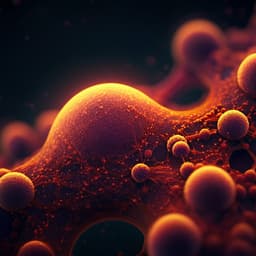
Earth Sciences
Carbonate chemistry and carbon sequestration driven by inorganic carbon outwelling from mangroves and saltmarshes
G. M. S. Reithmaier, A. Cabral, et al.
Discover how mangroves and saltmarshes are vital players in coastal carbon dynamics, impacting ocean chemistry through their unique outwelling behaviors. This groundbreaking research, conducted by leading experts including Gloria M. S. Reithmaier and Alex Cabral, reveals the potential consequences of intertidal wetland carbon export on seawater pH and blue carbon budgets. Don't miss the chance to dive into these findings!
~3 min • Beginner • English
Related Publications
Explore these studies to deepen your understanding of the subject.







